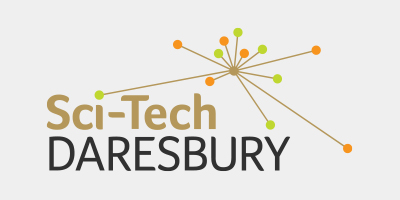May 15, 2020
How artificial intelligence is helping materials businesses to accelerate innovation
Developing new materials is in the DNA of the North West. From the cotton and textiles that drove the industrial revolution, to the synthesising of composite materials, the region has often led the way in materials research and development.

Whilst stories of the creation of many of our indispensable materials have arisen out of serendipitous mistaken experiments, from vulcanised rubber to Teflon (side note: Play-Doh was originally a wallpaper cleaner!?), materials development is an intensive process, taking years or even decades to manipulate elements to form the properties desired.
Graphene science for example, which has proliferated since Professor Sir Andre Geim and Professor Sir Kostya Novoselov at the University of Manchester isolated a single layer of carbon for the first time in 2004, can be dated back to as far as the 1800s.
The lengthy nature of the materials development process is in part due to the traditional reliance of scientists and research teams on ‘trial-and-error’, using understanding to inform gradual composition changes to create new material characteristics.
This intensive research over many centuries has provided exceptional insight into how materials behave, and how strength, weight, conductivity and more can be achieved through structural manipulation.
Modern research is now looking at how this wisdom can be combined with our widening knowledge of artificial intelligence (AI) technologies to speed up the materials innovation process; combining high-performance computing with novel algorithms to provide new opportunities for materials science design at the optimum of performance. Once again the North West is looking to lead the way.
Across the Liverpool–Manchester corridor (Liverpool City Region, Cheshire & Warrington, Greater Manchester), the materials chemistry industry is a thriving and growing sector. It is now considered one of the most economically impactful industries within the North West, currently contributing around £17B p.a. GVA to the UK economy and employing over 26,000 people, positioning the region as a honeypot of innovation.
Key to this success has been the growth of private sector leaders, such as Unilever and NSG, and a thriving SME-base, in synergy with the complementary facilities and expertise available within academia and the public sector. This includes STFC Hartree Centre at Sci-Tech Daresbury, as well as the powerhouses of research and development at the Materials Innovation Factory (University of Liverpool) and the Henry Royce Institute (University of Manchester).
Since 2012, the Hartree Centre has been working hand-in-hand with industry to accelerate the adoption of high-performance technologies to deliver transformative gains in performance, productivity and time to market. As part of its work with businesses, the Hartree Centre has increasingly been exploring the application of artificial intelligence (AI) to the analysis of chemical and structural data to predict compositions of new materials.
Whilst high-performance computing is often used to run large-scale simulations of interactions, integrating AI, and specifically machine learning into this, enables a system to predict which of these are most likely to be successful candidates (much like a human would use prior knowledge to inform which experiments are undertaken instead of trying all possible combinations). This has already been applied to a range of projects, including enhanced formulation of consumer goods, identifying counterfeit Scottish whiskies or improving drug therapies to name just a few.
Over the next few years, it is predicted that AI will become increasingly integral to materials research and development; creating processes that are currently unparalleled in speed and efficiency. Accompanying research is also being carried out to advance the next stage on for materials development, taking the predictions informed by machine learning into an automated laboratory environment where repetitive lab procedures could be performed by robots. Again, increasing the speed and efficiency of innovation.
Whilst merging the worlds of materials research and computing technologies is still in its relative infancy, the explosion of AI represents a new opportunity to maximise productivity and accelerate research and development to an unprecedented level. With the broad strengths of the North West, the region will no doubt be a driving force in delivering this new way of innovating for the next era of materials science.
Find out more about the academic and public sector support facilities across the region below:
STFC Hartree Centre (https://www.hartree.stfc.ac.uk/Pages/home.aspx)
Virtual Engineering Centre (https://www.virtualengineeringcentre.com/)
Materials Innovation Factory (https://www.liverpool.ac.uk/materials-innovation-factory/)
Henry Royce Institute (https://www.royce.ac.uk/)
National Graphene Institute (https://www.graphene.manchester.ac.uk/about/ngi/)



